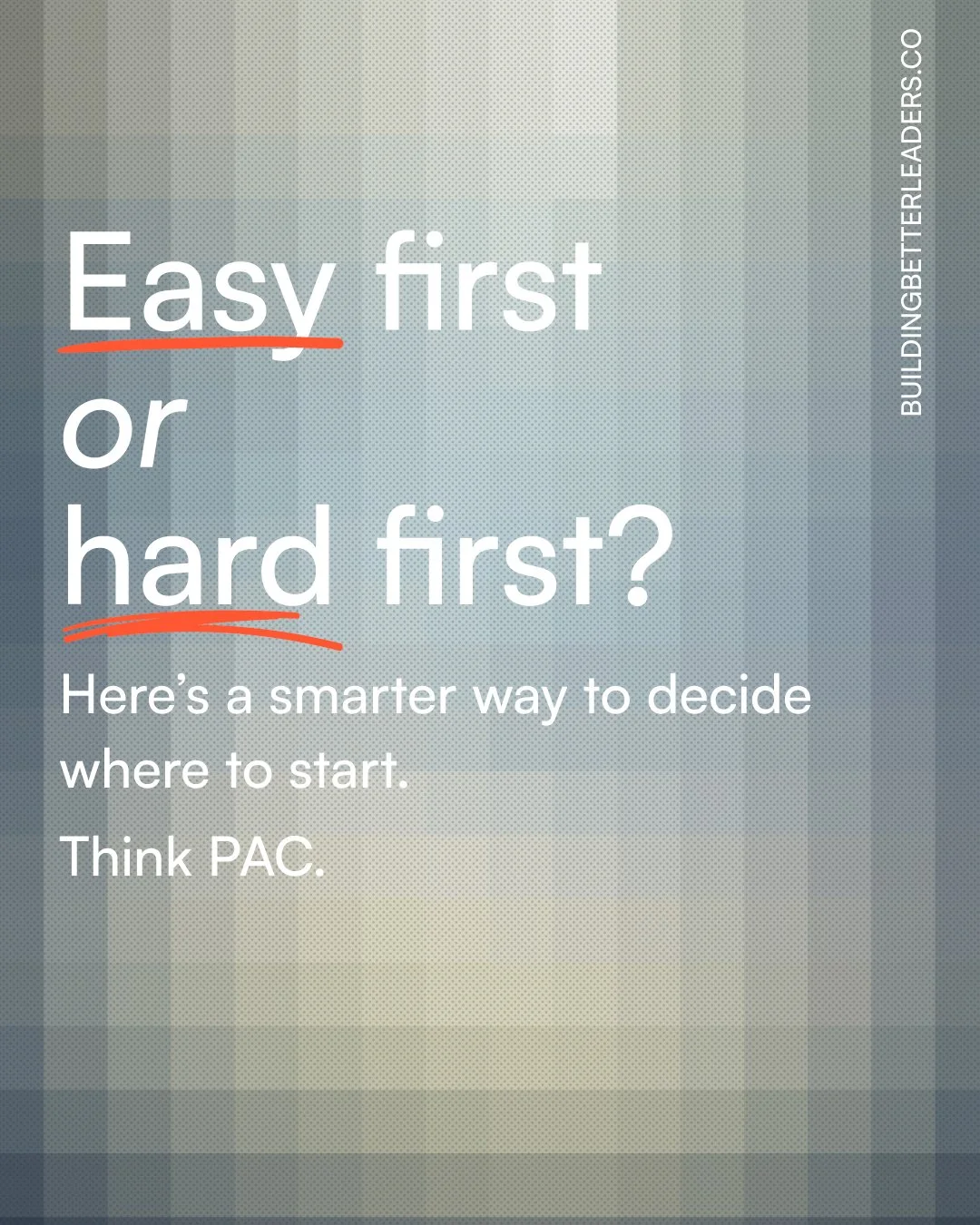Easy first or hard first? Here’s a smarter way to decide where to start to tackle your task.
One common approach in the productivity circle is to start doing easy tasks first to build momentum and confidence. On the other hand, there's the "Eat That Frog" school of thought popularized by Brian Tracy: do the most difficult, important task first to create a domino effect for the rest of your day.
So, which is better?
Here’s the honest answer: It depends.
Enter the PAC Framework (like Pac-Man—start where you’re most “ready to eat.”), a simple tool to help you decide where to begin:
🟡 P = Priority
Which task will move the needle the most today?
🟡 A = Ability to Pay Attention
How are your energy levels and emotional state? (eg. Low or high energy levels? Feeling overwhelmed or mentally present to do deep work?)
🟡 C = Clarity
Do you know exactly what to do next for this task? Or is it still vague?
Approach 1: Start with the Easy Wins
P: You’re yet to identify the most important task: It may feel overwhelming just thinking about it.
A: You’re tired, stressed, or mentally foggy: Not yet ready for deep focus.
C: You don’t yet have clarity on a roadmap.
In this case, choose a low-friction task that builds momentum or helps reset your focus. Then return to the priority task once you’ve stabilized your energy. Break down the priority task to smaller easier task and start tackling those first. This approach helps you “warm up” into deeper work.
💡 Example:
You’re feeling anxious and stuck. Start by responding to a quick email or organizing your workspace. Or you have multiple small to-do’s clogging your mind; clear those first to free up mental space. In short, build early wins - do something small but productive.
Approach 2: Start with the Hardest Task ("Eat That Frog")
P: You’ve identified your high-priority task.
A: You feel mentally sharp, emotionally calm, and ready to focus.
C: You know exactly what the task requires; it's clearly defined.
In this case, “eat the frog” first. It will give you a strong sense of accomplishment early. Once you’ve pushed down your biggest domino, the rest of the work for the day will be easier.
💡 Example:
You’re well-rested, have a proposal due, and you’ve already outlined it yesterday. Start with it.
Start smart — not just hard or easy
Here’s our final thoughts: whether you ease into your day with small tasks or leap into your most challenging work, the key is intentionality. Don’t default to what’s comfortable. Be mindful and use self-awareness and strategic thinking to align your starting point with your current emotional state. Use the PAC Framework and ask these questions:
Is there a task that will make the biggest difference today?
Am I mentally alert right now? / Am I feeling anxious?
Do I know exactly what to do for the hard task?

